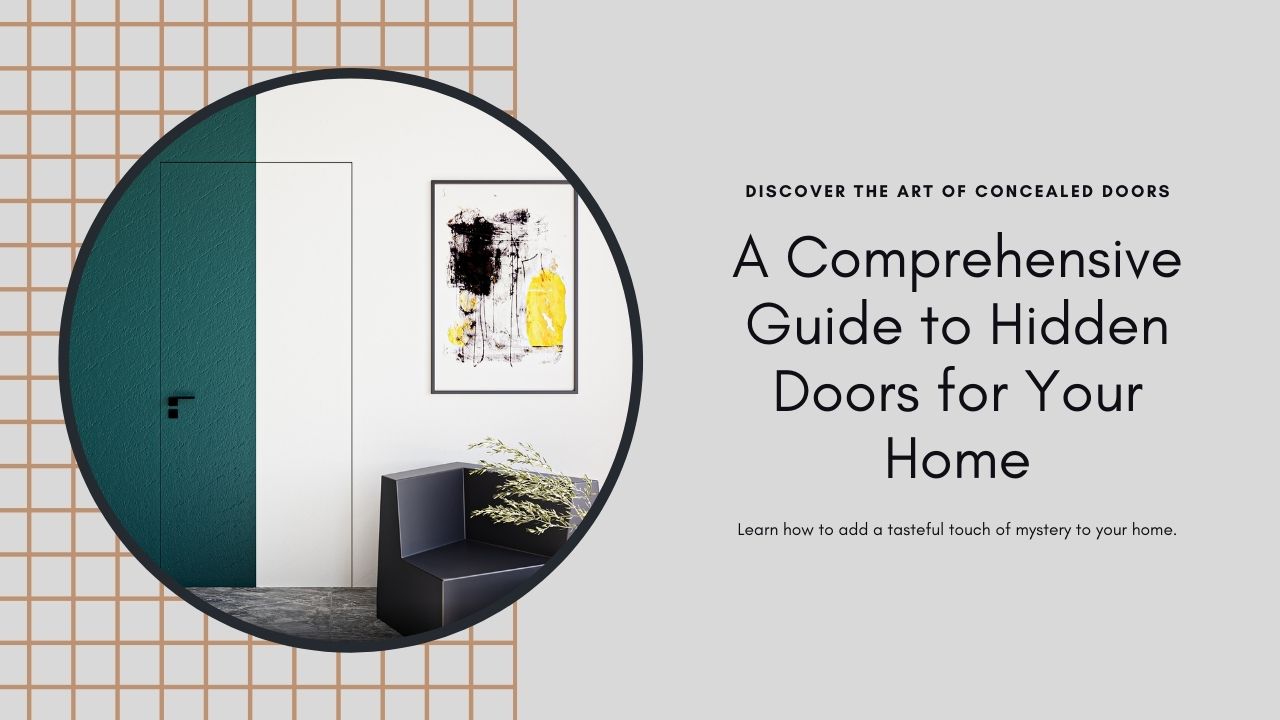Introduction
Welcome to the hidden world of concealed doors, a realm where design meets mystery, and functionality pairs with intrigue. These ingenious installations are not just doorways; they’re a statement of sophistication and a nod to the cleverness in architecture and interior design. In this comprehensive guide, we’ll unlock the secrets behind these hidden gems, exploring their history, design, types, and much more.
The History and Evolution of Concealed Doors
The tale of concealed doors is as old as architecture itself, rooted in the annals of history. Originally crafted for secrecy and protection, these doors have graced the halls of ancient castles, secret passages in medieval manors, and even the clandestine corners of government buildings. Fast forward to today, and the narrative has shifted. Modern concealed doors are less about secrecy and more about seamless integration and spatial efficiency. They represent a blend of art and functionality, offering a unique solution to modern design challenges while maintaining a link to their intriguing past.
Designing Concealed Doors
When it comes to designing a concealed door, the devil is truly in the details. The primary goal? To ensure the door is virtually invisible when closed. This calls for meticulous material selection – think matching wood grains or continuous wall textures – that blend the door seamlessly with its surroundings. Additionally, the choice of hinges and pivots is crucial; they must provide flawless functionality while being discreet. The design also needs to consider the door’s purpose, whether it’s to mask a private study, a hidden pantry, or a secret passage. Each application demands unique considerations to maintain the balance between aesthetics and practicality.
Types of Concealed Doors
Concealed doors come in various intriguing forms, each with its unique charm and functionality.
- Bookcase Doors: The classic choice for a hidden study or library, these doors masquerade as bookshelves, offering both secrecy and a touch of whimsy.
- Wall Panel Doors: These doors blend in with the wall, making them perfect for minimalist designs. They require precise craftsmanship to ensure the door panel aligns perfectly with the wall.
- Mirror or Artwork Doors: Doubling as decorative pieces, these doors conceal spaces while adding to the room’s aesthetic.
- Sliding Hidden Doors: Ideal for tight spaces, these doors slide away into walls, offering a sleek solution to space constraints.
Each type has its own set of pros and cons. Bookcase doors, while charming, can be heavy and require sturdy support. Wall panel doors, though sleek, might limit the wall space for other uses. Mirror or artwork doors can be fantastic conversation starters but might be more prone to wear due to frequent handling. Sliding doors are space-efficient but may have limitations in terms of size and weight.
Technological Innovations in Concealed Door Mechanisms
The world of concealed doors isn’t just about aesthetics; it’s also a hotbed for technological innovation. Today’s hidden doors come equipped with state-of-the-art mechanisms that enhance safety, durability, and user experience. Think along the lines of magnetic locking systems that offer secure yet effortless operation, or advanced pivoting hinges that allow for wider, heavier doors to move smoothly. Some concealed doors even incorporate smart home technology, enabling control through a smartphone app or integration with home automation systems for added convenience and security. These technological advancements not only make the doors more functional but also more accessible, ensuring that the charm of a concealed door can be enjoyed without the hassle.
Installation and Maintenance
While the allure of a concealed door is undeniable, it’s the installation and maintenance that truly makes or breaks the experience. Proper installation is key to ensuring that the door remains hidden and functions smoothly. It often requires skilled professionals who can handle the intricate details, from aligning the door perfectly with its surroundings to installing the sophisticated mechanisms.
Maintenance is equally crucial. Regular checks and balances, such as ensuring hinges are lubricated and the alignment remains intact, can prolong the life of the door and maintain its functionality. For doors with more advanced features, such as electronic locks or automation systems, periodic software updates and hardware checks are necessary to keep them in top working order.
Case Studies and Real-World Examples
To bring the concept of concealed doors to life, let’s explore some real-world applications. In a luxurious London townhouse, a concealed door in the living room opens to reveal a hidden home cinema, blending entertainment and elegance. In a New York apartment, a sleek, wall-panel door conceals a compact home office, maximizing the limited space. And in a historical building, a bookcase door not only adds character but also hides a modern security room, marrying the old with the new.
These examples showcase how concealed doors can address diverse design challenges, from space optimisation to aesthetic enhancement. They illustrate the versatility of these doors in various settings, proving that the only limit is the designer’s imagination.
Conclusion
The art of concealed doors is more than just a design trend; it’s a testament to human ingenuity and a nod to our desire for a blend of functionality and aesthetics. Whether you’re a home improvement enthusiast, an interior designer, an architect, or a construction professional, the world of concealed doors offers endless possibilities to enhance any space. Let’s continue to push the boundaries of what’s possible, creating spaces that are not only beautiful but also brimming with hidden wonders.
